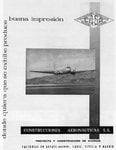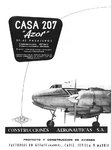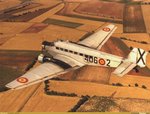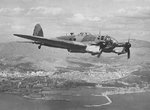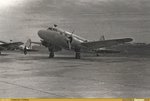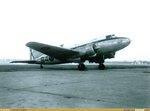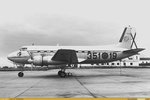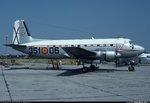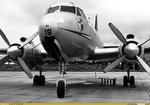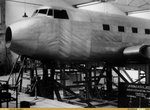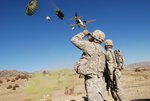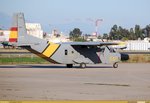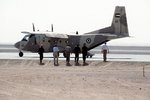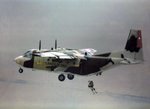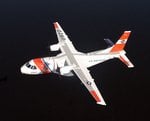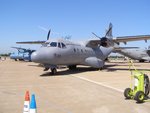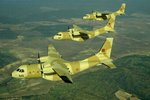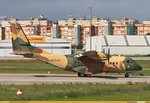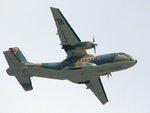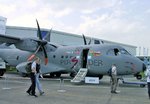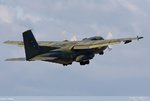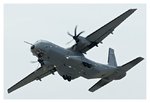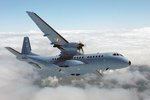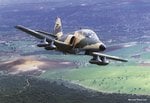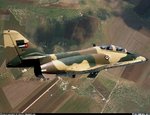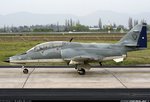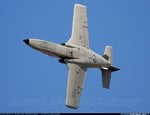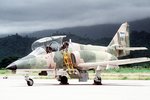EADS-CASA is a Spanish aircraft manufacturer, previously Construcciones Aeronáuticas, S.A. (CASA). It has been the Spanish branch of EADS since 1999. CASA was a Spanish aircraft manufacturer, with numerous landmark military transport aircraft designs such as the CASA C-212 Aviocar, CASA C-295 or the CASA C-101 trainer/ground attack aircraft.
After the war, CASA opened a new plant in Tablada, Seville, after obtaining from Germany various aircraft licenses, and built 25 Gotha Go-145A as the CASA C-1145, 25 Bücker Bü-133 Jungmeister as the CASA C-1133 and 555 Bücker Bü-131 Jungmann as the CASA 1131. Production of these German aircraft designs continued even after the end of World War two until the late fifties. It should be noted that the CASA C-201, a twin engine transport, engines were Spanish made ENMASA VAT Tigre G-125 engine. In 1940 CASA began the licensed manufacture of 200 Heinkel He 111s twin engine bomber as CASA C-2111. (These are the aircraft that were used as World War Two German Luftwaffe He-111s, that have been seen in various movies like "The Battle of Britain" and "Patton".)
Starting in 1943 the Spanish government began investing in CASA, with government first otaining a 33% share, and by 1992 this had increased to a controlling 99.2% interest in the company. In 1945 CASA opened a factory in Madrid dedicated to manufacturing of parts and sub-assemblies of their various aircraft and those that they had contracts to repair and overhaul. In 1946 CASA re-established the Projects Office and resumed the design of aircraft based on the firm's proprietary technology. In 1957 CASA won the contract from the United States Air Force for the maintenance of the F-100 Super Sabres based in Europe and Turkey and a contract from the Spanish Air Force to overhaul T-33s in the Spanish Air Force.
In 1962 CASA began the manufacture of the Northrop F-5A fighter-bomber under license. In 1971 CASA merged with the other large aerospace firm Hispano, SA. In 1972 Spain and CASA became one of the original members of the Airbus Consortium together with France, Germany and the United Kingdom. In 1977 CASA was awarded the contract to design and build the C-101 a trainer and attack aircraft for Spanish Air Force. In 1996 CASA joins Eurofighter 2000 project. And in 2008 EADS-CASA plant in Seville was designated by Airbus Military as the assembly plant for the future Airbus A400M heavy transport. After many delays and threats of cancellation, on December 11, 2009, the A400M first flight took place.
Since 1999 CASA has been a part of EADS, the European aerospace corporation, with Aérospatiale-Matra of France, Dornier GmbH and DASA of Germany. Since then, the Spanish branch of EADS is called EADS-CASA. The current CEO and Chairman of EADS-CASA is Domingo Ureña-Raso. Currently EADS-CASA employs around 7,500 workers.
On July 2001 EADS-CASA Military Aircraft marked the beginning of the Eurofighter Typhoon Final Assembly Phase at Getafe facilities. It is one of 4 assembly lines for the Eurofighter (the other 3 lines are at Warton in United Kingdom, Manching in Germany and Turin in Italy). Production was expected to be up to 7 wings per month and 12 aircraft per year. EADS CASA is producing the right wing for the Eurofighter and assembling 87 aircraft for the Spanish Air Force. First delivery to the Spanish Air Force was realized together with the other partner air forces in the second half of 2002. EADS was formed in July, 2000 following the merger of Aerospatiale Matra of France, DaimlerChrysler from Germany and Construcciones Aeronáuticas S.A. from Spain. EADS is the third largest aerospace company in the world. It has approximately 100,000 employees.
After the war, CASA opened a new plant in Tablada, Seville, after obtaining from Germany various aircraft licenses, and built 25 Gotha Go-145A as the CASA C-1145, 25 Bücker Bü-133 Jungmeister as the CASA C-1133 and 555 Bücker Bü-131 Jungmann as the CASA 1131. Production of these German aircraft designs continued even after the end of World War two until the late fifties. It should be noted that the CASA C-201, a twin engine transport, engines were Spanish made ENMASA VAT Tigre G-125 engine. In 1940 CASA began the licensed manufacture of 200 Heinkel He 111s twin engine bomber as CASA C-2111. (These are the aircraft that were used as World War Two German Luftwaffe He-111s, that have been seen in various movies like "The Battle of Britain" and "Patton".)
Starting in 1943 the Spanish government began investing in CASA, with government first otaining a 33% share, and by 1992 this had increased to a controlling 99.2% interest in the company. In 1945 CASA opened a factory in Madrid dedicated to manufacturing of parts and sub-assemblies of their various aircraft and those that they had contracts to repair and overhaul. In 1946 CASA re-established the Projects Office and resumed the design of aircraft based on the firm's proprietary technology. In 1957 CASA won the contract from the United States Air Force for the maintenance of the F-100 Super Sabres based in Europe and Turkey and a contract from the Spanish Air Force to overhaul T-33s in the Spanish Air Force.
In 1962 CASA began the manufacture of the Northrop F-5A fighter-bomber under license. In 1971 CASA merged with the other large aerospace firm Hispano, SA. In 1972 Spain and CASA became one of the original members of the Airbus Consortium together with France, Germany and the United Kingdom. In 1977 CASA was awarded the contract to design and build the C-101 a trainer and attack aircraft for Spanish Air Force. In 1996 CASA joins Eurofighter 2000 project. And in 2008 EADS-CASA plant in Seville was designated by Airbus Military as the assembly plant for the future Airbus A400M heavy transport. After many delays and threats of cancellation, on December 11, 2009, the A400M first flight took place.
Since 1999 CASA has been a part of EADS, the European aerospace corporation, with Aérospatiale-Matra of France, Dornier GmbH and DASA of Germany. Since then, the Spanish branch of EADS is called EADS-CASA. The current CEO and Chairman of EADS-CASA is Domingo Ureña-Raso. Currently EADS-CASA employs around 7,500 workers.
On July 2001 EADS-CASA Military Aircraft marked the beginning of the Eurofighter Typhoon Final Assembly Phase at Getafe facilities. It is one of 4 assembly lines for the Eurofighter (the other 3 lines are at Warton in United Kingdom, Manching in Germany and Turin in Italy). Production was expected to be up to 7 wings per month and 12 aircraft per year. EADS CASA is producing the right wing for the Eurofighter and assembling 87 aircraft for the Spanish Air Force. First delivery to the Spanish Air Force was realized together with the other partner air forces in the second half of 2002. EADS was formed in July, 2000 following the merger of Aerospatiale Matra of France, DaimlerChrysler from Germany and Construcciones Aeronáuticas S.A. from Spain. EADS is the third largest aerospace company in the world. It has approximately 100,000 employees.
Attachments
Last edited:

